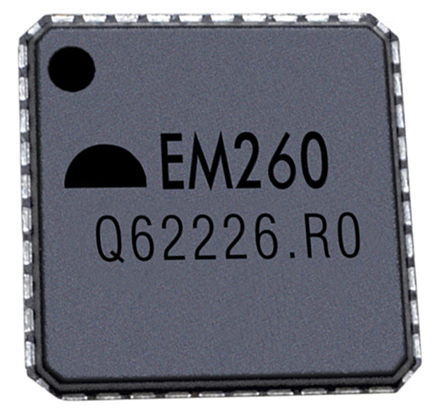ARM's Cortex-M3 CPU Used In Ember's ZigBee Chips
ZigBee may still be foreign to many consumers, but it's a growing wireless transmission technology that has especially taken hold in the home automation realm. To that end, ARM has decided to hitch its wagon to one Ember in order to delve gently into what could be a promising partnership.
Announced today, Ember will rely on ARM's own Cortex M3 processor for its next generation ZigBee semiconductors, and considering the goals of each company, the match truly is one that's made in heaven. ZigBee needs a low-power chip, and ARM has low-power chips to provide. No, the Cortex M3 is no powerhouse, but ZigBee isn't a technology that requires gobs of computational abilities.

As it stands, Embed is the runaway leader in the ZigBee market, with a market share of over 65 percent and a global customer base. Ember licensed the 32-bit Cortex-M3 processor to deliver increasingly sophisticated solutions for applications such as Smart Energy, home area networks, home health care and security systems. According to ARM, the inclusion of its chip will significantly enhance performance, sophistication and security, and enable Ember to continue providing the ZigBee industry with powerful and power efficient system-on-chips (SoCs).

Ember CEO, Bob LeFort, was understandably excited about the new agreement: "ZigBee applications are becoming increasingly demanding and a critical component in solving some of the most vexing problems of our time, such as managing energy more effectively, and we intend to be at the forefront of that revolution. ARM is the acknowledged leader in processor technology, as Ember is in wireless mesh networking technology, so ours is a natural alliance to lead the blossoming ZigBee market into the future." Neither company confessed to when products would be shipping our to vendors, but we're guessing sooner rather than later.
Announced today, Ember will rely on ARM's own Cortex M3 processor for its next generation ZigBee semiconductors, and considering the goals of each company, the match truly is one that's made in heaven. ZigBee needs a low-power chip, and ARM has low-power chips to provide. No, the Cortex M3 is no powerhouse, but ZigBee isn't a technology that requires gobs of computational abilities.

As it stands, Embed is the runaway leader in the ZigBee market, with a market share of over 65 percent and a global customer base. Ember licensed the 32-bit Cortex-M3 processor to deliver increasingly sophisticated solutions for applications such as Smart Energy, home area networks, home health care and security systems. According to ARM, the inclusion of its chip will significantly enhance performance, sophistication and security, and enable Ember to continue providing the ZigBee industry with powerful and power efficient system-on-chips (SoCs).

Ember CEO, Bob LeFort, was understandably excited about the new agreement: "ZigBee applications are becoming increasingly demanding and a critical component in solving some of the most vexing problems of our time, such as managing energy more effectively, and we intend to be at the forefront of that revolution. ARM is the acknowledged leader in processor technology, as Ember is in wireless mesh networking technology, so ours is a natural alliance to lead the blossoming ZigBee market into the future." Neither company confessed to when products would be shipping our to vendors, but we're guessing sooner rather than later.

